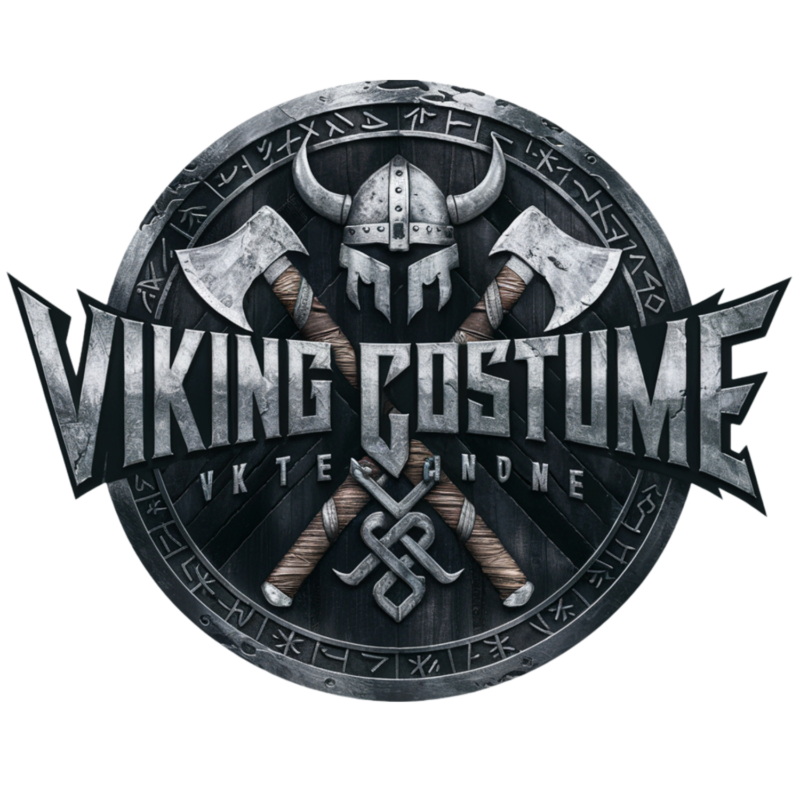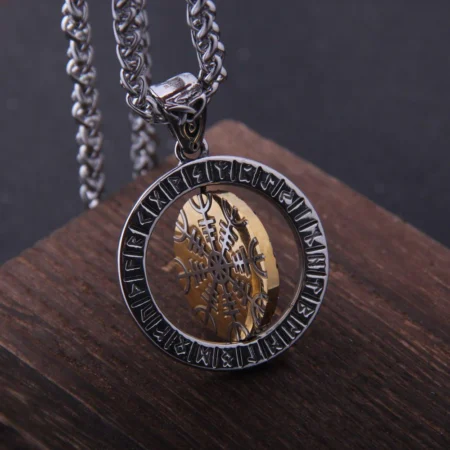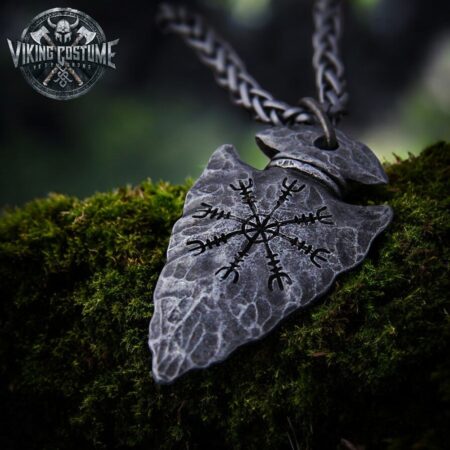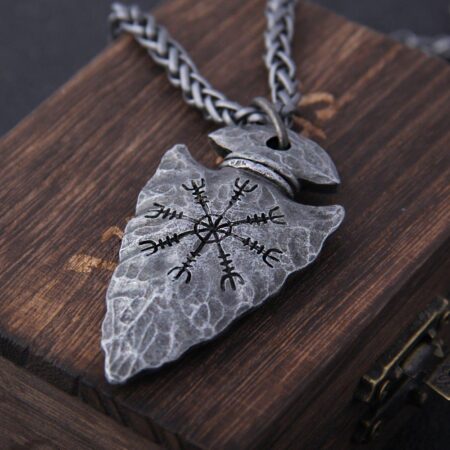Blog, Viking History & Mythology
Aegishjalmur Meanings: Everything You Need to Know About the Helm of Awe
Aegishjalmur: An Overview of the Helm of Awe
Aegishjalmur, or Ægishjalmur, is one of the most prominent symbols of Norse mythology. Known as the “Helm of Awe,” this symbol represents strength, courage, and protection. Viking warriors believed that wearing the Aegishjalmur would make them invincible, not only physically but also mentally.
You can imagine the Aegishjalmur as a spiritual compass that guides and protects you in difficult situations. This symbol was often painted on the foreheads of warriors or on shields before going into battle. This not only gave them strength, but also terrified their opponents.

Today, the Aegishjalmur still holds a special appeal. It is used in jewelry, tattoos, and spiritual rituals to create a connection with the strength and protection of ancient mythology. This symbol is a reminder that no matter what challenge you face, you can overcome it if you have courage and faith in your own inner strength.
Tracing the History of Aegishjalmur
If you are curious about the origin of Aegishjalmur, it is deeply rooted in Norse mythology, especially associated with gods such as Odin. According to the stories, Odin, the god of wisdom and war, used Aegishjalmur as a symbol of supreme power to protect himself and lead his warriors.
Ancient documents, such as the Poetic Edda, mention the appearance of this symbol in rituals to protect the soul and body from evil forces. The Vikings believed that Aegishjalmur not only protected them from physical danger but also brought them spiritual peace in the face of death.
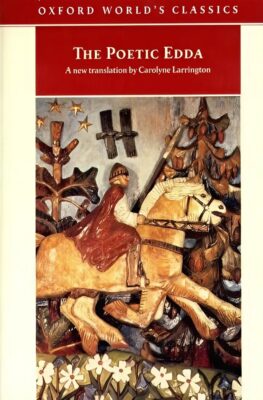
Moreover, this symbol was not limited to war but was also engraved on objects such as shields, warships, and even amulets. This proves that Aegishjalmur was not just a simple symbol but also an indispensable part of the cultural life of the Vikings.
Symbolism of Aegishjalmur in Viking Culture
The Aegishjalmur symbol has many layers of meaning. First of all, it is a symbol of protection. In Viking culture, protection not only means fighting against enemies but also protecting the soul from negative elements. Therefore, Aegishjalmur was often engraved on weapons or jewelry to create a spiritual shield.
Second, Aegishjalmur represents strength and courage. Viking warriors believed that this symbol gave them spiritual strength, helping them to persevere in the most difficult challenges. It also carries the message that confidence and belief in oneself are important factors in achieving victory.
Finally, this symbol is associated with majesty and the fear it brings to opponents. When a warrior wears Aegishjalmur, they not only create a powerful presence but also send the message that they are unshakable.
How the Vikings Used Aegishjalmur
During the Viking era, Aegishjalmur was not only a symbol but also a practical tool in everyday life. Warriors often painted or carved this symbol on their foreheads or armor before going into battle. This was believed to bring protection and terrify their opponents.

Not only limited to the battlefield, Aegishjalmur was also used in spiritual rituals. Vikings carved this symbol on important objects or even on their skin as a way to attract protection from the gods. This symbol was considered a bridge between humans and the spirit world, helping them maintain balance and avoid danger.
Today, we still see images of Aegishjalmur in art, jewelry, and even in tattoos. This proves the power and longevity of this symbol over time.
Differences Between Aegishjalmur and Vegvisir
While both the Aegishjalmur and the Vegvisir are well-known Viking symbols, they have very different meanings and functions, reflecting two unique aspects of Norse culture. The Aegishjalmur, or Helm of Awe, symbolizes strength, protection, and fear. The symbol is often associated with Viking warriors, who used it to increase their courage and strike fear into their enemies. Before each battle, they could draw this symbol on their foreheads or armor to receive protection from divine forces.
Meanwhile, the Vegvisir, also known as the “Viking Compass,” represents guidance and direction. Designed to ensure that the bearer of this symbol would never lose his way, the Vegvisir brings a sense of connection to nature and exploration. It not only helped Vikings navigate challenging seas, but also symbolized a strong will in the face of hardship.

The biggest difference between the two symbols lies in their purpose and use. Aegishjalmur focuses on inner strength and protection, while Vegvisir serves to guide physical and spiritual journeys. Both reflect the Vikings’ flair for blending spirituality with practical life, but each symbol carries a unique meaning that makes them stand out and irreplaceable.
The Lasting Legacy of Aegishjalmur
The power and significance of Aegishjalmur has stood the test of time, becoming a symbol not only of Norse mythology but also of the modern human spirit. Today, the symbol remains powerfully appealing and influential, appearing in art, fashion, and even spirituality. You can easily find Aegishjalmur on jewelry, tattoos, and protective items, where it continues to carry a message of protection and inner strength.
In today’s world, Aegishjalmur represents not only a part of history but also a bridge between the past and the present. It inspires those who are seeking protection or need more strength to overcome challenges in life. Many people use Aegishjalmur in modern rituals to connect with spirituality, creating an invisible shield to protect the soul from negativity.
The fact that this symbol has survived and thrived in modern culture proves that the power of Aegishjalmur has not been lost. It is a living testament to the importance of preserving cultural heritage, and affirms that, like the Viking warriors of old, you too can find strength and confidence within yourself.
